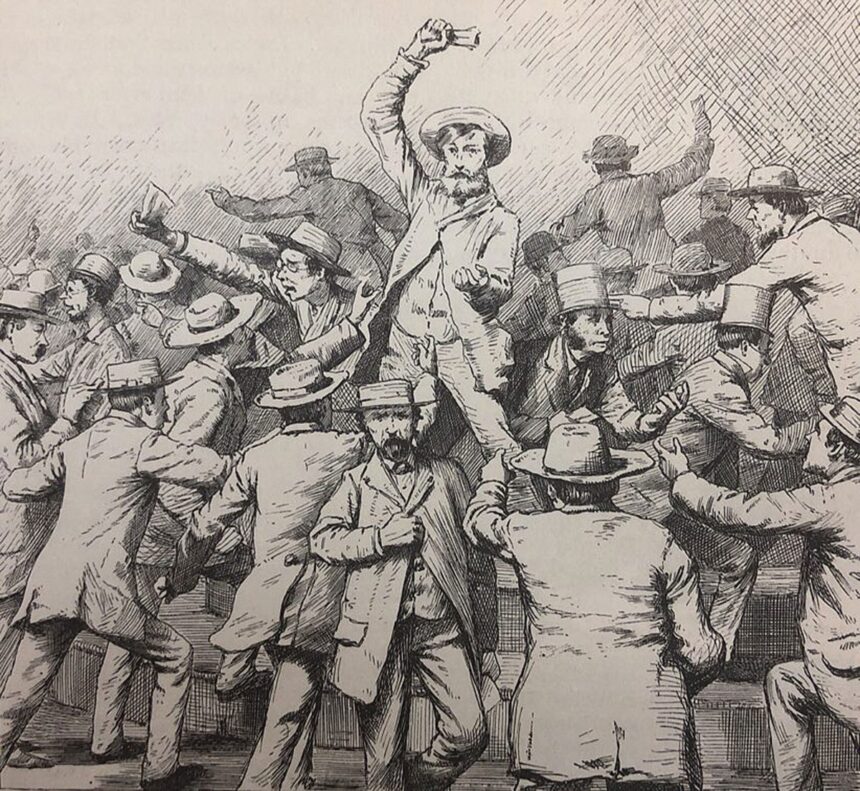If you are wringing your hands over large-cap stocks due to high market concentration and lofty valuations, allocating to small-cap stocks may give you some peace of mind. Beyond concentration and valuation considerations, there are several good reasons why this is a good time to consider adding small caps to your portfolio.
As the US stock market reached all-time highs in June, market concentration among large-cap stocks also approached levels not seen since the Tech Bubble. The top 10% of names account for about 66% of the total market cap of the Russel 1000 Index as of May 31. Stock market valuations of the Russell 1000 Index, which represents the top 1,000 US companies by market capitalization, also appear elevated. The index’s price-to-earnings (PE) ratio of 25.6 in May is in the 92nd percentile for the ratio since its launch.

Source: FactSet, Bloomberg, NTAM Global Asset Allocation Quantitative Research. Data is from 1/1980 to 5/2024. Stock concentration is the percentage of total market cap by top 10% largest companies in Russell 1000 Index.

More Attractive Fundamentals
After decades of technological advancement, tech sectors like Information Technology and Communication Services now represent more than 38% of the total weight of the Russell 1000 Index. The valuations of mega-cap firms within these sectors have been buoyant, driven by high growth expectations. In contrast, the distribution of sector weights and PE ratios of the constituents in the Russell 2000 Index (2,000 small-cap companies) are more moderate and normalized, as depicted in Exhibit 2.

Source: FactSet, Bloomberg, NTAM Global Asset Allocation Quantitative Research. As of May 31, 2024.
Relative to their own history, small-cap stocks are trading at a big discount to large-cap stocks. Exhibit 3 shows the forward PE ratios of the Russell 2000 Index over the Russell 1000 Index since 1990. As of May 31, the forward PE ratios of small caps over large caps was 73%, which indicates small caps are currently trading at a 27% valuation discount to large-cap stocks. Such a low valuation discount ratio is ranked at the 18th percentile over the last 35 years.

Source: FactSet, Bloomberg, NTAM Global Asset Allocation Quantitative Research. Data is from 3/1990 to 5/2024. Exclude stocks with negative earnings.
The valuation ratios between small caps and large caps have predictive power over their future relative performances. In Exhibit 4, we created a scattered plot between forward PE ratios and the forward 10-year return spread of small minus large cap stocks. The trend line slope is -0.11. The negative slope, or beta coefficient, indicates that cheaper relative valuations can lead to better small-cap performance. Relative valuation explains 60% of the total variance of the 10-year forward return spread. Given current historically low valuations, we expect small caps will outperform large caps over the next 10 years.

Source: FactSet, Bloomberg, NTAM Global Asset Allocation Quantitative Research. Data is from 3/1990 to 5/2024. Forward PE excludes stocks with negative earnings.
Small Caps do Better When Economy Recovers
Small-cap firms are younger companies with less established businesses compared to their large-cap counterparts. Small-cap stocks are more sensitive to economic conditions and, therefore, are more correlated with economic cycles. As the economy starts to recover and expand, small-cap stocks tend to rebound the most due to their more attractive valuations. Exhibits 5a and 5b show the average return of small caps vs. large caps across different economic cycles. Small caps outperformed large caps by an average of 66 basis points (bps) and 493 bps during recovery and expansion regimes, respectively.


Source (5a and 5b): FactSet, Bloomberg, NTAM Global Asset Allocation Quantitative Research. Data is from 1/1984 to 4/2024. Performances in Exhibit 5b are annualized average monthly returns of Small (Russell 2K) and Large (Russel 1K).
Our macro-economic regime model suggests that we are currently in the recovery regime given that the Leading Economic Indicators month-over-month change has remained negative but is trending upward. Small caps will outperform large caps when the economy is on its path to full recovery and beyond.
Rates Can Be a Tailwind for Small Caps
Small companies do not have the same level of access to external debt financing as their larger brethren. They also rely more on floating-rate and short-maturity debt to finance their business operations. When the Federal Reserve (Fed) tightened monetary policy by raising interest rates, small firms faced a significantly higher cost of capital, and this can adversely impact their profitability. However, when the Fed starts to ease monetary conditions by cutting interest rates, small firms will benefit more from improved credit conditions than large firms.
Exhibit 6 shows the interest rate sensitivities of the return spread between small caps and large caps over Fed Funds rate changes. In the scatter plot, Y-axis is the one-year forward return spread between the Russell 2000 and the Russell 1000. The X-axis shows quarterly change of effective Fed Funds rates. Negative regression betas indicate that, historically, cutting rates led to better future performance of small caps. The forward-based relationship is also statistically significant with a t-stat of -3.1. The analysis provides empirical support that the anticipated rate cuts by the Fed will likely be a tail wind for small caps.

Source: Bloomberg, NTAM Global Asset Allocation Quantitative Research. Quarterly data from 1/1984 to 5/2024.
Small-Cap Firms May Benefit From Reshoring
According to an International Monetary Fund research report, globalization has entered a new phase of “Slowbalization.” The Global Trade Openness Index has plateaued due to rising geopolitical tensions, and many large, multi-national corporations have started to shift their supply chains back to domestic suppliers. This will likely benefit small-cap firms, which are more domestically focused than large-cap firms.

Source: FactSet, Bloomberg, NTAM Global Asset Allocation Quantitative Research. As of 06/17/2024.
Key Takeaway
Investors are showing increased concern about large-cap stocks due to their high market concentration and lofty stock valuations. Meanwhile, small-cap stocks appear to be underbought despite their attractive fundamentals.
Current economic conditions are favorable for a small-cap stock rebound. And the reshoring should benefit smaller US companies in the long-term. All these factors combine to make a compelling case for allocating a portion of assets to small-cap stocks.










